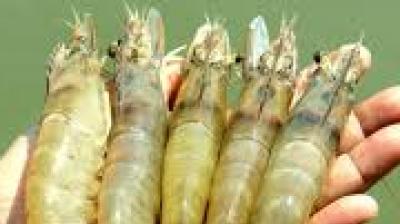
Farmers like “Nardu Das”, also from Nandigram, say the situation is dire.
India,World's Second Largest Shrimp Producer, Under Threat
In the coastal town of Nandigram, West Bengal, shrimp farmer “Buddhadeb Pradhan has recultivated his pond within a few weeks of the previous harvest. Even when there is a high risk of disease that often comes with double-cropping, he feels that he has no choice.
“I am worried about the falling prices if I can recover my investment of ₹3 lakh,” he said, as India’s once-thriving shrimp sector is facing the impact of steep “U.S. tariffs imposed earlier this year.”
U.S. President Donald Trump made this announcement in May; the farm price of shrimp has fallen from ₹300 to around ₹230 per kg**, which is far below the production cost of ₹275. With a “58.26% combined duty” — including countervailing and anti-dumping charges — Indian exporters are losing ground fast.
India, the “world’s second-largest shrimp producer after Ecuador”, exported “5 billion USD worth of frozen shrimp” in FY 2024–25, with the U.S. buying nearly half. But the new tariffs have shaken the foundation of an industry employing 10 million people across farms, hatcheries, and processing units.
Farmers like “Nardu Das”, also from Nandigram, say the situation is dire. “We borrow money and hope for good returns, but diseases and price crashes push us into poverty. Some farmers are losing everything.”
“Ravid Kumar Yellanki”, president of the “All India Shrimp Hatcheries Association”, said that “the crisis has also crippled India’s 550 hatcheries. Over half have stopped production. He further added that “7–8 billion shrimp seeds” have been discarded in the past four months due to lack of demand.
Experts say structural flaws worsen the situation. India “imports brood stock” — mother shrimp flown in from the U.S. — but poor adaptation to Indian conditions often triggers disease. “We’ve urged the government to develop local brood stock for better-quality seeds,” said “IPR Mohan Raju”, president of the Prawn Farmers Federation of India.
Meanwhile, “Ecuador has seized this opportunity”, exporting over “1 million tonnes of shrimp to the U.S.” in the first nine months of 2025 — up 14 percent year-on-year — helped by lower costs and just a “15 percent tariff”.
Aquaculture expert Manoj Sharma believes India must diversify now. “Exporters have ignored the domestic market for too long. It has huge potential,” he said. For farmers like Pradhan and Das, that shift will take time to happen.













